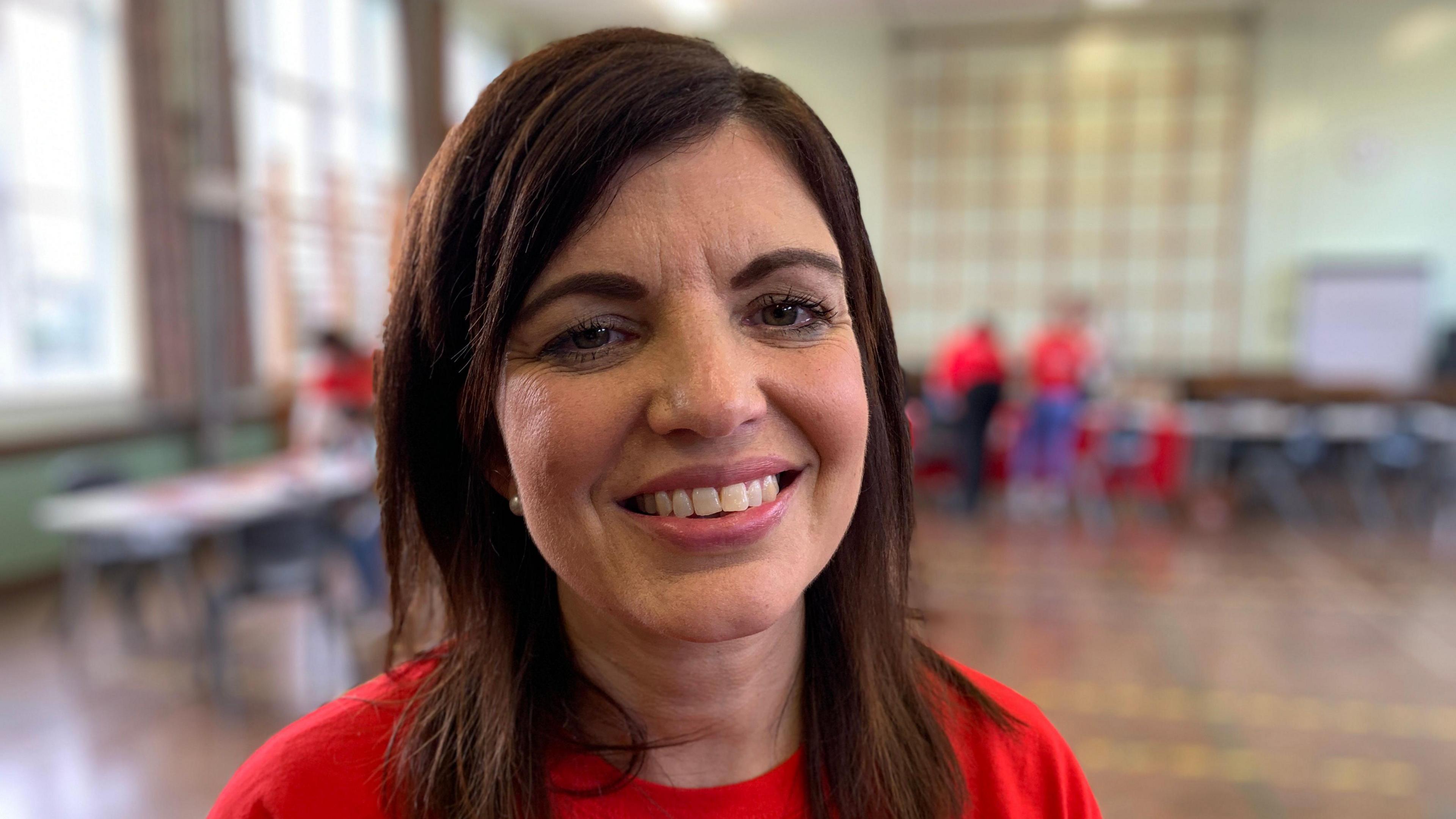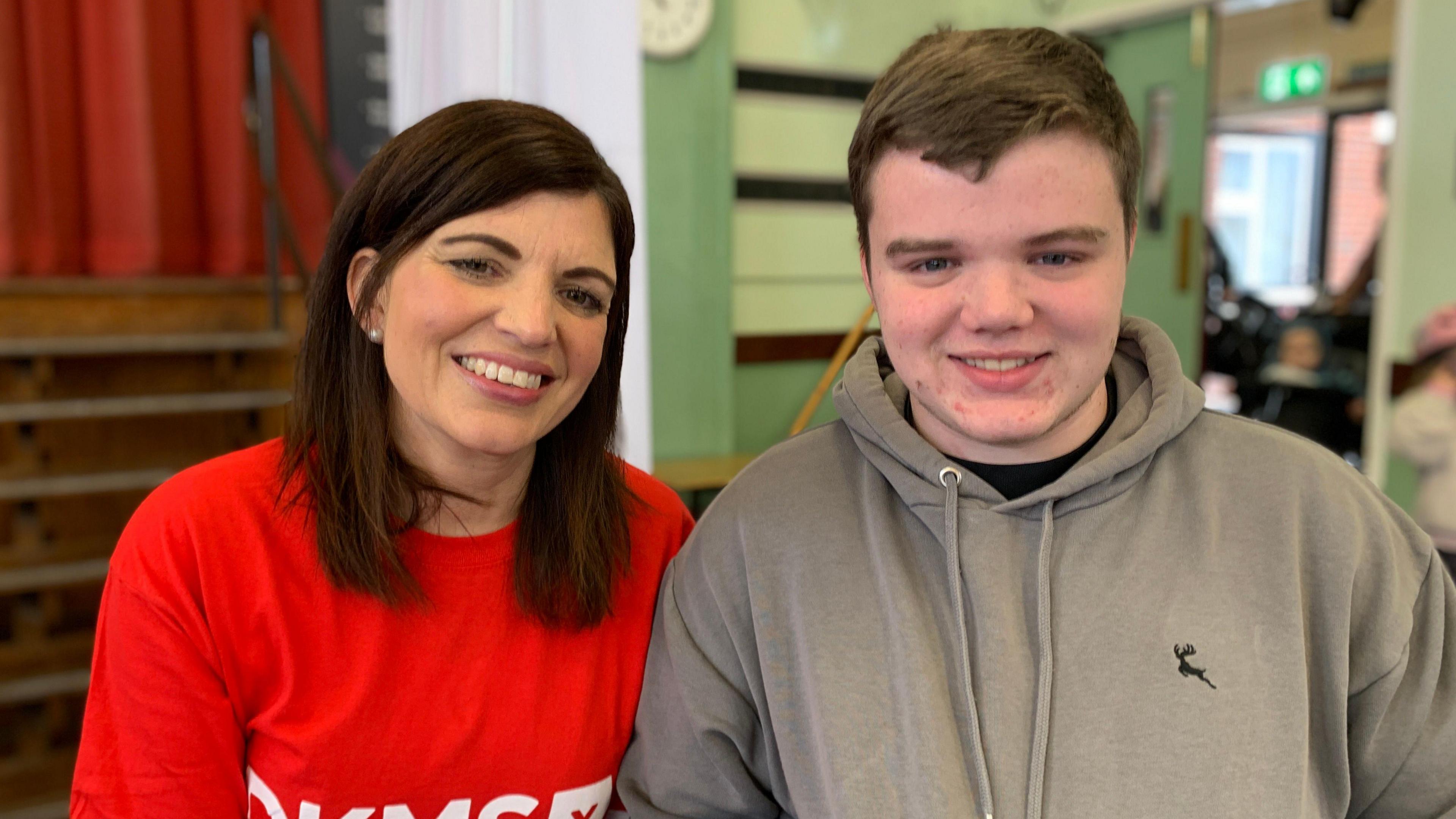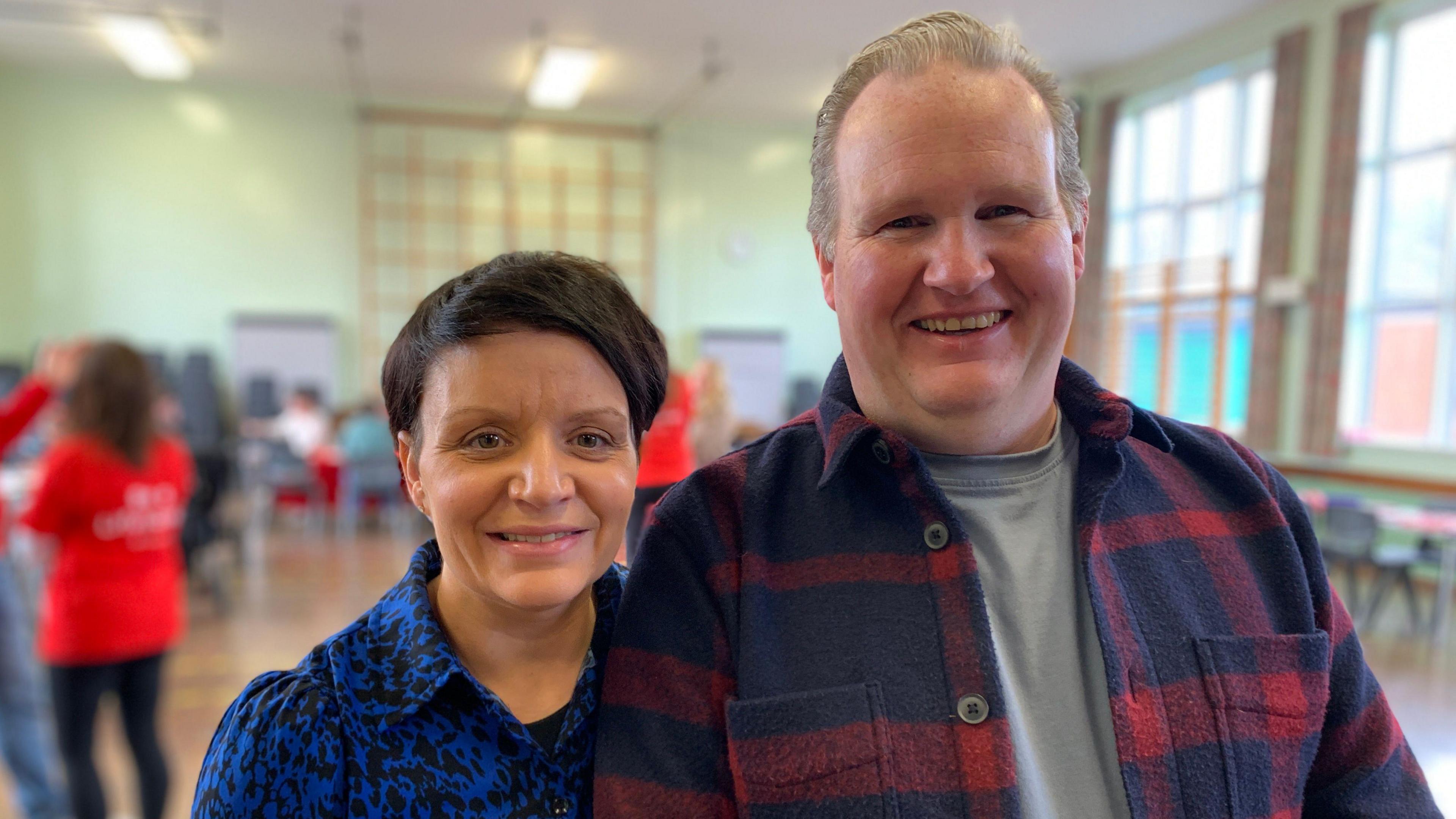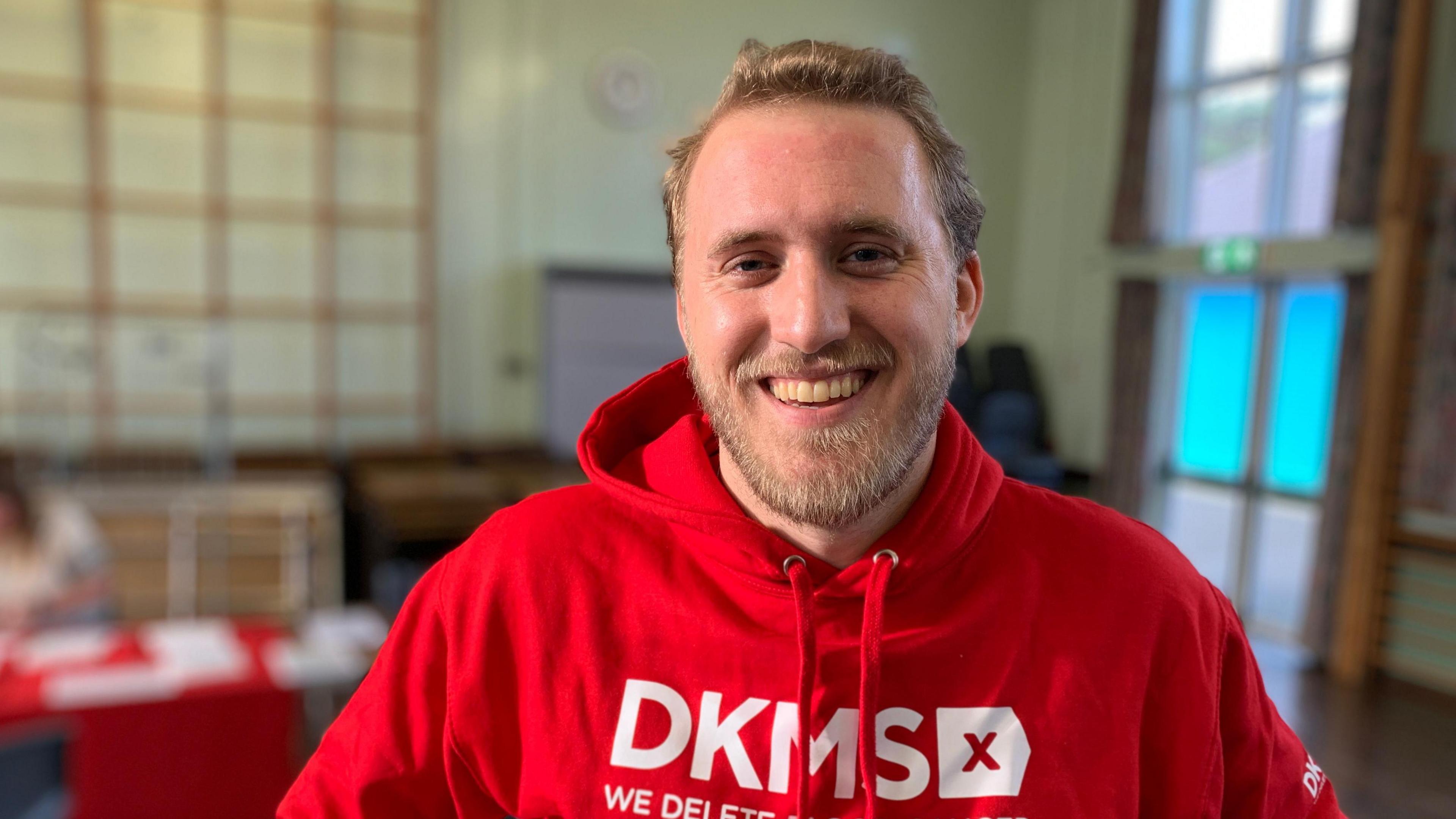Woman's emotion at making 'one-in-800' match

Alana Campbell's stem cells matched those of a French woman in need of a life saving donation
- Published
When Kilkeel woman Alana Campbell signed up to become a potential stem cell donor she knew the odds of being matched with someone in need were against her.
But after her nephew Robin was diagnosed with a rare genetic disorder almost 15 years ago and needed a life saving stem cell transplant, she felt she had to do something.
Remarkably, within six months of registering, she was informed she was a "perfect match" for a woman in France.
"I have to say I actually cried. I try not to cry now," she said.
She hopes telling her story can help other people consider going on the register themselves.

Alana with her nephew Robin who needed a life saving transplant as a toddler
Robin's parents feel very lucky they were able to find a stem cell donor for him when he was three years old and incredibly sick.
No-one in the family was a match but they were able to find one a bit further afield.
"It was an Italian donor, that's all we know. We don't know anything more," said Robin's dad Geoffrey Calvert.
"We would love to know who he was or anything like that."
But regardless of who he was, they know if he hadn't signed up to be a donor Robin might not be around today.

Leah and Geoffrey Calvert are grateful to the anonymous Italian man who saved their son's life
Currently the odds of becoming a match for someone who needs a stem cell donation is about one-in-800.
Michael Gallagher, from the Blood Cancer Charity DKMS, said it needed more people to register as donors to give others a higher chance of survival.
"Back in 2019, we saw close to 100,000 people register with us and now we're getting half of that," she said.
He said each year there were hundreds of people across the UK who were told there was no match for them.
What is a stem cell transplant?
A stem cell or bone marrow transplant replaces damaged blood cells with healthy ones. It can be used to treat conditions affecting the blood cells, such as leukaemia and lymphoma.
Stem cells are special cells produced by bone marrow (a spongy tissue found in the centre of some bones) that can turn into different types of blood cells.
A stem cell transplant involves destroying any unhealthy blood cells and replacing them with stemcells removed from the blood or bone marrow.
Stem cell transplants are used to treat conditions in which the bone marrow is damaged and is no longer able to produce healthy blood cells.
Transplants can also be carried out to replace blood cells that are damaged or destroyed as a result of intensive cancer treatment.

Michael Gallagher from Blood cancer charity DKMS says there's been a sharp fall in people registering as donors
Now that Alana has seen stem cell donation from both sides she is passionate about getting others to sign up.
She remembers the day she made her donation and there was someone waiting "with one of those little suitcases you take on the plane".
She said it was like something out of a film.
All she ever knew was that the woman she helped was in her 50s and very ill.
She got a phone call the following year telling her she was still alive.
"It was a very emotional journey. I would do it again tomorrow," she said.